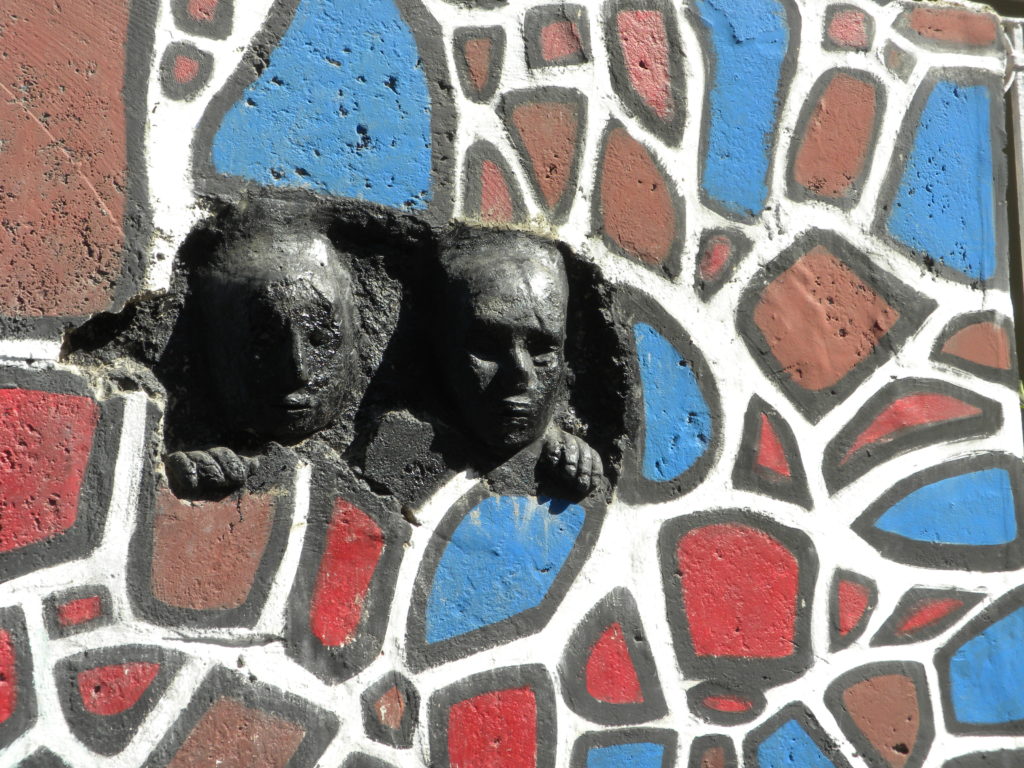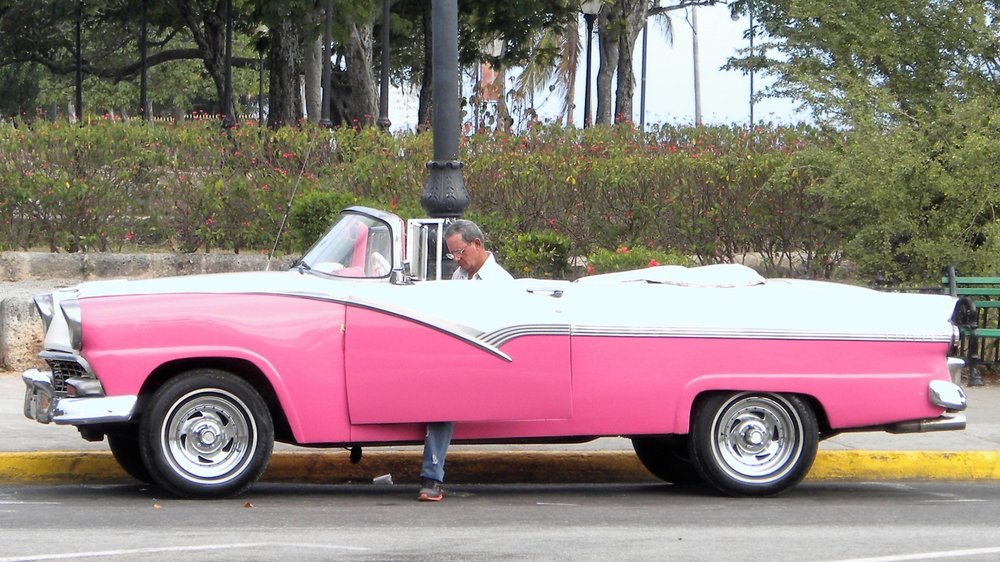A fast-moving Caribbean storm chased us off the idyllic, mostly empty Cuban beach. The wind almost whipped the towel out of my hand as I pushed the key card into the door of our third floor hotel room. Nothing happened. Tried again. Nothing.
By the time my companion returned with a new card — and news of a power outage — rain was coming down in sheets. Though we escaped the tropical deluge, our neighbor’s room flooded in the all-inclusive, government-owned resort near Trinidad.
When traveling in Cuba it’s best to be prepared — a lot of things just don’t work well, including Wi-Fi, US credit cards and cellphones. The food is mostly mediocre; drinks are watery. Even so, Cuba can be amazing. Limited development and few cars mean air pollution is minimal and skies are clear and glowing with stars. That same night I watched a lightning show off to the east that was every bit as spectacular as 4th of July fireworks.
Cuba’s Beauty Is Unspoiled by Development
So you shrug, as our affable Cuban guide often did, and marvel at the unspoiled beauty of an island lost in time and admire the perseverance of its people.
Rather than wait for the expected deluge of US tourists after President Obama lifted travel sanctions, I arranged a people-to-people tour in mid-2016 through CAPS Tours of Toronto, Canada. My plan was to see Cuba before all the changes likely as the island resumes relations with its Big Brother after more than 50 years of silence and isolation.
As it turned out my time was excellent: I arrived before the masses and before the Trump administration once again restricted individual travel to Cuba, prohibiting US visitors from engaging with businesses operated by the military, which controls many hotels.
It’s still unclear how Trump’s new Cuba policy will impact US travelers, but it was obvious during my visit that change is coming to the island — and fast. Construction cranes dotted the Havana skyline during my seven-day visit, which included stops in Cienfuegos and Trinidad. But transforming the country’s famously crumbling infrastructure and massive colonial buildings is a long-term proposition. In the meantime, visitors need to be prepared for adventure — and inconveniences.

Some Highlights:
The cars. Our guide Clem, who grew up in Havana but migrated to Canada eight years ago, was waiting for us outside the Havana airport with a relatively new Chinese-made rental car. I was hoping for a’55 Chevy or a Cadillac convertible, but I was thankful for air-conditioning. Vintage candy-colored American cars taxi tourists around for fun and photos, but otherwise surprisingly few vehicles ply the roads. When we traveled to the island’s southern coast later in the week, horse-drawn carts nearly outnumbered motor vehicles.
Snorkeling in the Bay the Pigs. It wasn’t on our itinerary, but our resourceful guide arranged a snorkeling stop along the famous bay. The dive shack had no electricity or plumbing; the changing room was a shed whose door wouldn’t close. No matter. We gamely plunged into the aquamarine water behind guide Alex “Mojito” to peer at neon-colored fish nibbling silt-covered coral. The highlight was seeing a small boat sunk during the ill-fated, CIA-sponsored invasion in 1961. Even better: the fresh-caught lobster Alex grilled for lunch and served with, what else, mojitos.
(Note to self: Find out if the CIA really attempted to assassinate Fidel 800 times. A stoic docent at nearby Giron Museum recounted that “fact” as part of the Cuban version of the invasion that soured US-Cuban relations for decades, while we dripped with sweat due to a broken air conditioner.)
The people. Friendly, warm and eager to help — almost excessively so. Seeking a bigger tip? Maybe and who could blame them? The average Cuban makes $20-$25 a month in the local-only Cuban currency. (A second currency is for tourists only.) But I sensed a genuine interest in welcoming visitors — especially Americans — and in learning more about the outside world.
The hotels. We stayed in four dated but comfortable government-owned hotels. Service was pleasant; amenities adequate — one roll of toilet paper per room. Towels were clean but thin. The last two nights in Havana we stayed at the 1930s-era Hotel de Nacional de Cuba, where the mafia once mingled with movie stars. The 450-room hotel overlooking Havana’s iconic Malecon hasn’t changed much since the revolution — and that’s both a compliment and a criticism.
The food. Miami probably serves up better Cuban food. Even so, we were impressed with our meals in paladars, private restaurants run by Cuba’s nascent entrepreneurs. At our first dinner at Dona Bulimia’s in the old city , we devoured fresh fish and slushy mojitos; our last meal at La Guarida included a decadent strawberry and chocolate dessert, which was also served in Cuba’s only Oscar-nominated movie “Fresa y Chocolate.” At San Cristobal, perhaps the city’s best-known private restaurant, our waiter proudly shared photos of former President Obama, who ordered a steak, during his historic visit last year. Most paladars are small, hard to find, located in private homes and require advance reservations (which is why having a local guide helps).
The sites. An ambitious itinerary took us to the main attractions in old and new-er Havana. We strolled cobblestone streets to the massive limestone cathedral (built by the Spanish in 1770s) and stopped at the city’s oldest square, where several ambitious renovation projects are underway. The country’s capitol building is instantly recognizable (it looks like the US Capitol and it’s covered in scaffolding) as is Revolution Square, where Fidel delivered many fiery, anti-US speeches. Stops in between took us inside once glorious mansions that are now rundown tenements crowded with dozens of families. We also met bookstore owners and restaurateurs whose businesses are beginning to blossom as the Cuban government loosens its grip on just about everything.
Music and art. Havana is particularly rich in both. At the hip Fabric de Arte Cubano, avant-garde art meets salsa-rap-fusion music in what was once a cooking oil factory. In the city’s best-known jazz club, La Zorra y El Cuevo, we joined music lovers in the cramped basement venue to listen to a gifted jazz pianist. A troupe of school girls sashayed to salsa queen Celia Cruz’s Quimbara during an impromptu performance on the terrace of Ernest Hemingway’s former Havana home .
The end. After dashing about collecting the prerequisite souvenirs, Cuban coffee and cigars, I was back in the Havana airport — hot, tired and beguiled by the island time forgot.

 As a journalist, I’ve written about crime for newspapers, business deals for magazines, cruise ship ports for online travel publications and industry trends for websites. My focus now is exclusively on travel.
As a journalist, I’ve written about crime for newspapers, business deals for magazines, cruise ship ports for online travel publications and industry trends for websites. My focus now is exclusively on travel. 

